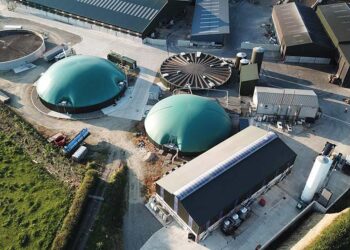By Bob Grote, Chief Executive Officer, Grote Company Family of Brands
How is 2024 going for food processors? For many in the industry, business continues to boom. Of course, potential challenges loom that may impact how the rest of the year plays out.
Let’s look at some trends that those in the food processing industry should be watching.
Eating at home has become the accepted practice
Food processors continue to benefit from the eat-at-home trend. While more people dined at home during the pandemic because restaurants were closed and they had no choice, the habit seems to be sticking.
There are numerous reasons for this change in behavior.
One is the rise in prices when it comes to eating out in restaurants. Menu prices have been going up steadily. Grocery prices are up 1.2% year over year versus restaurant prices, which have risen by 5.1%.
In addition, restaurants continue to struggle to find enough workers to serve customers. If diners have had a bad experience, they may be less likely to return.
The drop in disposable income also contributes to this, as consumers may have less money to spend on categories like eating out.
The rise in popularity of prepared foods
Because some haven’t learned to cook but want to eat at home to save money, prepared food is experiencing a boom. Consumers may be too busy or tired to cook or may want to spend that time pursuing other interests.
For these reasons, pre-made meals, frozen pizza, and sandwiches are seeing record sales. For example, the frozen pizza business is projected to grow at a compound annual growth rate (CAGR) of 6.9% from 2023 to 2030.
All of this positively impacts food processors who continue to try to keep up with demand.
Economic uncertainty still lurks
While the U.S. isn’t seeing a recession, several factors are impacting financial decisions for food processing companies.
There was a dip in the GDP last quarter, but growth remained positive. Q2 numbers may help shed light on the true status of the economy.
Further, mergers and acquisitions (M&A) were very low last year, having their worst year since 2010. This measure can be an indicator of how the economy is performing. If the money isn’t there to spend, it hurts M&A activity. Meanwhile, the private equity market is up, which is a positive sign.
Another encouraging sign? Europe and the U.K. seem to be having a better year. They appear to be turning the corner, with much more activity and optimism after what’s been a tumultuous period.
Processors should watch for a summer slowdown. Most are accustomed to seeing activity slow in the summer, with many decision-makers on vacation. Add to that the election cycle, which means buyers may hold off on purchases, especially as we head toward the fall.
Technology adoption is a necessary but challenging exercise
Technology is moving fast – but it’s all about determining what difference it will make in your business.
When deciding which technology to invest in, processors must consider what it does for them. Does the technology help them sell more? Sell faster? Produce goods more cost-effectively? Produce higher quality goods?
Wading through ALL the options to figure out the actual value to your company is time-consuming. If you won’t see true ROI, it may not be a worthwhile investment.
With growth comes change
If your business is growing, change is part of that growth. When it comes to running the business, expansion brings with it complexity.
To attract and retain strong, qualified team members, companies need to provide people with opportunities to grow. So, while the growth creates these opportunities, there are growing pains, as well.
Having the right people in place is a critical factor in a company’s ability to grow. And, a company that is growing attracts stronger talent.
For some, growing their business involves acquisition. When one company acquires another, it can offer more opportunities and better benefits to workers. Beyond that, it can focus on creating a better environment for workers to operate in. A larger brand can bring extra energy to help that company compete against more prominent players. With a growth philosophy, the acquiring brand can show they’re committed to investing in the capital side of the business. Often there are long-standing needs that haven’t been fulfilled. That investment makes the team’s work easier and better.
Recruiting younger workers
Manufacturing as an industry needs to remind younger workers that it’s an attractive environment offering job security. As workers continue to age out, the push to recruit younger talent should include highlighting the stability of the workplace and showing them there’s an opportunity to progress.
Most manufacturing jobs don’t require a college degree, and with the trend of skipping college in favor of gaining work experience, manufacturers offer many opportunities for younger workers to excel. Offering training opportunities is part of this effort. For example, giving them the chance to take classes at the company’s expense is one way to invest in your workforce. Another might be allowing them to change departments or roles within the company.
Food processors are poised to have a strong year
All in all, 2024 is shaping up to be a robust year in the food processing industry, with many promising trends.
Manufacturers always need to be aware of potential pitfalls, but with foresight and resilience, they can navigate any challenges that may come up along the way.
Bob Grote is the chief executive officer of Grote Company. An engineer by schooling, a salesman by nature, and a businessman by practice, he joined Grote Company in 2000, became CEO in 2008, and now spends his time developing industry partnerships and seeking the latest food technologies. During his tenure, Grote has overseen the acquisition of industry pillars, including PFI, Vanmark, Pro-Fab, Advanced Food Technology, GME International, and Pizzamatic. He serves as Director at Large of the FPSA (Food Processing Suppliers Association) and sits on various industry and non-profit boards.













